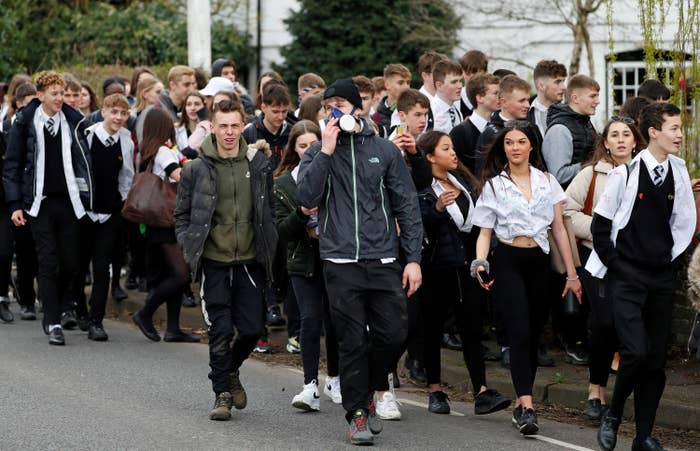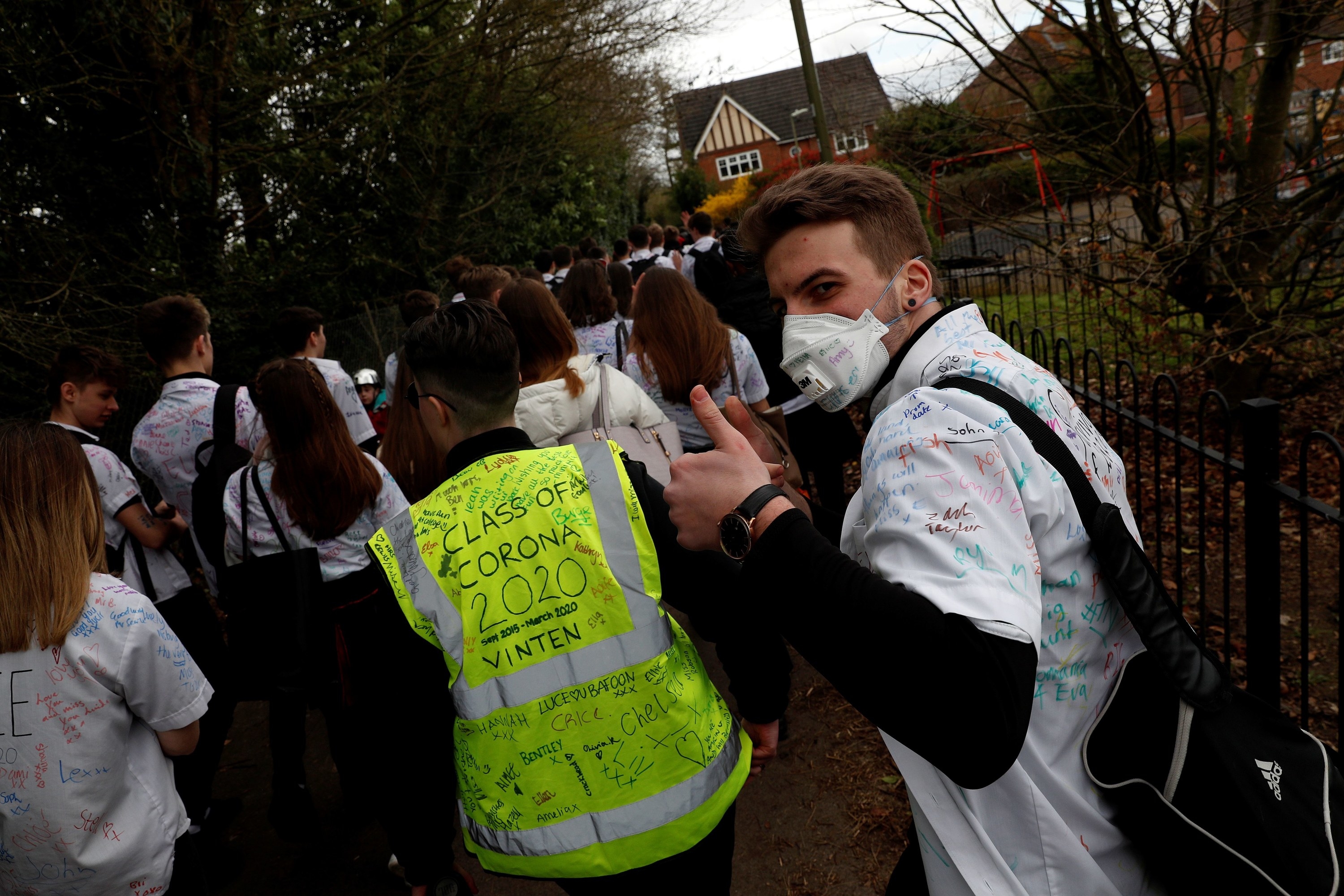
The British government received scientific evidence that closing schools would reduce the impact of COVID-19, the disease caused by the coronavirus, and delay its peak four weeks ago, but only took the decision to do so on Wednesday, newly published evidence reveals.
The evidence, published on Friday by SAGE — the Scientific Advisory Group for Emergencies — shows how the government has wrestled with the complex question of whether to shut schools down.
In guidance submitted on Feb. 26, the experts said closing schools could lead to “around 10%–30% reduction in peak incidence” of coronavirus if they were shut for “over 8 weeks” and if this was “enacted early”.
The panel, whose advice helps inform the government’s policy decisions surrounding the pandemic, added that such a measure could help delay the peak of the nation’s epidemic by “no more than three weeks and [possibly] much less” and that if universities were also closed it could further reduce the number of COVID-19 cases. The government has so far decided not to close universities.
The decision to delay shutting schools has been met with criticism from public health experts due to children often being asymptomatic but highly social — and has fallen behind many Western countries such as France, Belgium, Germany, Japan, and some states in India and the US.
However, in the advice on Feb. 26, the panel cited a disadvantage of shutting schools: that children from poorer backgrounds could suffer more from this measure as they may be reliant on free school meals.
A week later, on March 2, a subsequent “Consensus Statement” from SAGE saw a slight shift in the advice. Previously, it was based on the assumption that children have a “similar role” in coronavirus transmission as they do with flu. This was adjusted to base advice on the belief that although “children are likely an important group in the epidemic even if they directly experience little disease”, it is likely their effect in the overall numbers is “significantly less” than flu.
Without stating how much different it would be, the panel modelled the outcome of shutting schools for between 6 and 12 weeks. In this scenario, the impact could be a reduction of 7.5% and 25% on the overall numbers at the peak of the crisis.

But, the advice continued, it would be “unlikely to reduce the final size of the epidemic and are unlikely to delay the peak by more than 3 weeks”. The government’s publicly stated plan, however, has been to reduce and delay the peak in order to prevent the NHS becoming overwhelmed with hospital admissions.
Two days later, on March 4, a further document set out the concerns of shutting schools down. While it did not retract or adjust the scientific advice about the resulting reduction in COVID-19 cases, nor the delay to the peak, it explained the potential for unintended negative consequences: “School closures will be highly disruptive and likely to present an unequal burden to different sections of society. Our understanding of reports from Japan is that there is growing discontent around the policy. Isolation of entire households also poses a substantial, and unequal, burden on those affected.”
The advisory group therefore concluded that other policies should be enacted. This was framed, however, in terms of what the public would accept. “Given this, the combination of interventions most likely to be socially acceptable involves isolation of symptomatic cases and isolation of at-risk members of the public. These are also the most closely targeted, and therefore obviously legitimate, strategies.”

By piling up every possible social distancing policy at the same time — shutting bars and restaurants, keeping sick and older people indoors, preventing grandparents looking after children — it could increase the chances of problems popping up elsewhere, such as “congregation of children at parks” and “queues at takeaways”.
This could also lead to a lack of compliance, the advice said, as well as making it harder for parents to work if their children are off school and their live-in parents are isolated, unable to help with childcare. All of which would mean: “For poorer families, loss of income and increased household bills (heating, electricity, food delivery etc), will occur concurrently with loss of social services provided through schools (free school meals, after school clubs etc).”
Overall, the SAGE document advised that “the importance of schools during a crisis should not be overlooked”, giving examples such as “acting as a source of emotional support for children, providing education (e.g. on hand hygiene) which is conveyed back to families, provision of social service (e.g. free school meals, monitoring wellbeing)”, and “acting as a point of leadership and communication within communities”.

